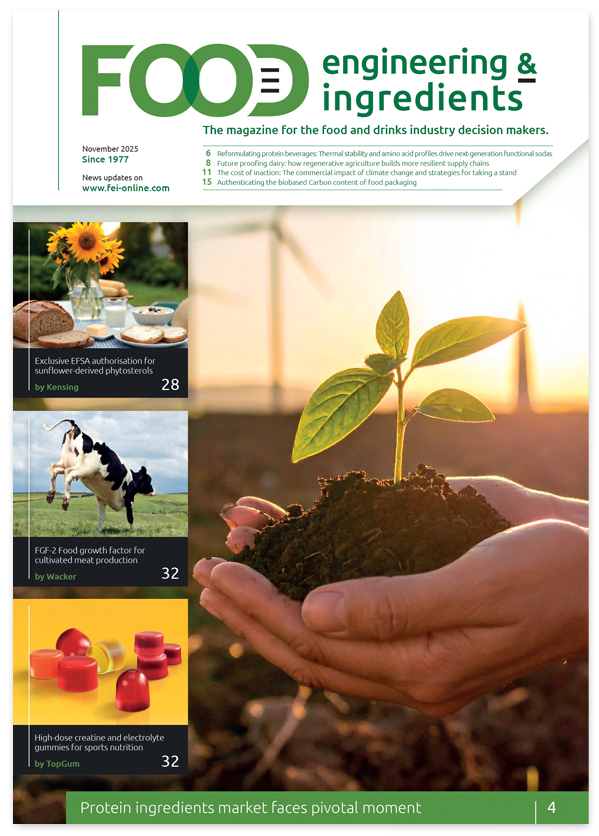Majority of US infant and toddler foods fail to meet WHO nutritional guidelines
New research reveals significant nutritional shortcomings and widespread promotional non-compliance in commercial baby foods sold across major US grocery chains.
A comprehensive study published in the journal Nutrients [1] has found that 60% of infant and toddler foods available in the United States fail to meet nutritional recommendations set by World Health Organization (WHO) guidelines. The research, conducted by The George Institute for Global Health, analysed 651 products from the top ten US grocery chains, highlighting concerns about the nutritional quality and marketing practices of commercial baby foods.
Nutritional deficiencies
The study’s findings paint a concerning picture of the nutritional landscape for commercially available infant and toddler foods in the US:
- 70% of products failed to meet protein requirements
- 44% exceeded total sugar recommendations
- 25% did not meet calorie requirements
- 20% surpassed recommended sodium limits
Dr Elizabeth Dunford, Research Fellow at The George Institute and Adjunct Assistant Professor in the Department of Nutrition at the University of North Carolina, emphasised the importance of early childhood nutrition: “Early childhood is a crucial period of rapid growth and when taste preferences and dietary habits form, potentially paving the way for the development of chronic diseases such as obesity, diabetes and some cancers later in life.”
The rise of convenience foods
The research identified a significant trend towards convenience foods, particularly baby food pouches. These products have seen a 900% increase in their proportion of sales over the past 13 years. However, pouches were found to be among the least healthy options, with fewer than 7% meeting total sugar recommendations when fruit-based pouches were excluded from analysis.
Dr Dunford expressed concern about this trend: “Time-poor parents are increasingly choosing convenience foods, unaware that many of these products lack key nutrients needed for their child’s development and tricked into believing they are healthier than they really are.”
Marketing practices under scrutiny
The study also examined the marketing practices employed by baby food manufacturers. Results showed that 99.4% of products featured at least one claim prohibited by WHO guidelines on their packaging. On average, products displayed four prohibited claims, with some featuring up to 11.
Common prohibited claims included:
- ‘Non genetically modified (GM)’ (70%)
- ‘Organic’ (59%)
- ‘No BPA’ (37%)
- ‘No artificial colours/flavours’ (25%)
Dr Daisy Coyle, Research Fellow and Dietitian at The George Institute, commented on these marketing tactics: “The lack of regulation in this area leaves the door wide open for the food industry to deceive busy parents. We saw this not only in the use of misleading claims but also in the use of misleading names, where the product name did not reflect the main ingredients found on the ingredient list.”
Implications for public health
The findings are particularly concerning given the rising rates of obesity among young children in the US. Since the 1970s, obesity in children aged two to five has more than doubled, with approximately 13% of preschool children now living with obesity. This trend has reportedly worsened since the COVID-19 pandemic.
Dr Dunford noted a shift in policy focus: “While reducing childhood obesity was a priority under the Obama administration, the issue appears to have fallen by the wayside in recent years.”
Call for increased regulation
The researchers emphasise the need for stricter regulation and guidance in the US infant and toddler food market. The study’s findings suggest that current practices may be contributing to poor nutritional outcomes and potentially misleading consumers.
“Our findings highlight the urgent need for better regulation and guidance in the infant and toddler foods market in the United States – the health of future generations depends on it,” Dr Dunford said.
This research underscores the importance of evidence-based nutritional guidelines and transparent marketing practices in the infant and toddler food industry. As the market for convenience baby foods continues to grow, addressing these issues becomes increasingly critical for public health outcomes and consumer protection.
Reference:
- Coyle DH et al. An evaluation of the nutritional and promotional profile of commercial foods for infants and toddlers in the United States. Nutrients 2024 https://www.mdpi.com/2072-6643/16/16/2782




